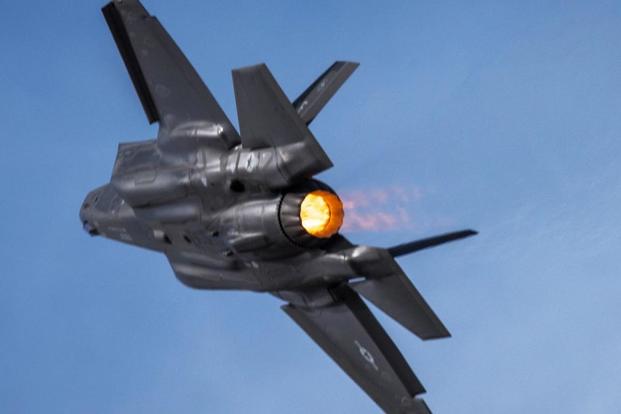The opinions expressed in this op-ed are those of the author and do not necessarily reflect the views of Military.com. If you would like to submit your own commentary, please send your article to opinions@military.com for consideration.
After making progress for years in getting Congress to approve unpopular early weapons retirements, the Air Force is hitting a brick wall. Service leaders have simply gone too far -- with plans to get rid of 1,500 aircraft over the next five years while buying just 467 new aircraft.
The plan to shrink and age the Air Force further and faster is also colliding with readiness challenges and a stubborn fighter gap. A recent House hearing quickly narrowed on the collaboration of systems to deliver air superiority. The Air Force officials pointed to the "fighter mix" of F-35s, F-15EXs, F-22s, and F-16s to ensure the U.S. is capable of deterring and defending against threats.
Air Force Secretary Frank Kendall said it himself: "China's engineers are not faster than ours…what they have done, that we have not done enough of, is start a lot of new things and then take them into fielding."
In other words, China is not smarter than us; they're simply outspending us on purchases of new equipment. While admitting a major shortcoming, leaders spent the rest of the hearing defending a budget that restricts the Air Force's ability to field more capability and therefore compete.
Yet the People's Liberation Air Force (PLAF) continues to crank out advanced stealth fighters, as evidenced by the J-20 -- China's best stealth aircraft -- beginning to patrol the East and South China Seas. In addition to operationalizing J-20 and FC-31 fighters which "gradually erode longstanding and significant US military-technical advantages," according to the Department of Defense, the PLAF is simultaneously creating new medium- and long-range stealth bombers.
The Next Generation Air Dominance program is critical to developing and later fielding sixth-gen capabilities, but they are exactly that: next generation. America's Air Force has combat credible fighters available for purchase that would sustain the fleet today.
The trouble lies not in our ability to produce, but rather the Administration's willingness to procure.
Understanding that our lack of fielding systems at scale is a big disadvantage, the Administration is responding with silence. Changes to the Pentagon's five-year spending plans in one budget cycle are troubling.
During that period the Air Force planned on fielding 144 F-35s, meanwhile the current mid-range budget plans for only 95. That is a 35 percent decrease in the Air Force's planned fifth-gen fighter fleet. Officials claim the drastic dip between 2022 to 2024 -- from 48 to 33 to 19 -- is to wait until the "more advanced" Joint Strike Fighter Block 4 modernization package can be purchased. But the Block 4 upgrades can be installed on already-deployed aircraft.
This is the plan for F-22s and F-16s, so it is puzzling why leaders aren't willing to shore near-term gaps in fighter capability. Well, puzzling only if one thinks this is about anything other than diminished resources.

The problem with this approach is if Pentagon leaders notice a crack in the sidewalk, they stop all traffic and rebuild the road. While there may be backroads on the way home, there is no alternate path for a fighter-few fleet once conflict begins.
The same trend applies to the F-15EX, the system that the Air Force Secretary and Chief of Staff -- after a very long pause -- could list as the only potential advantage the United States has over China with regards to hypersonic weapons. So even though the administration would increase F-15EX production in FY23 and FY24, they would still "substantially" reduce the total buy by 44 percent.
When asked about identifying efficiencies across platforms, especially the F-35 program, Secretary of the Air Force Frank Kendall stated that "sustainment provides a great opportunity for this and continued savings, because [sustainment] is over 50 percent of lifetime costs."
This is exactly why the Pentagon should not plan on cutting costs by cutting new fighter purchases. Rather, they should identify continued savings to bolster modernization efforts in the maintenance of weapons platforms.
Thankfully, the hearing wrapped with needed candor by Lt. Gen. David Nahom, deputy chief of staff for Air Force plans and programs. He told Congress that resource trade-offs (read: fewer dollars) mean the service will have to keep more F-15Es in service than initially planned.
He noted that in a "resource-unconstrained world, those would all be EXs -- newer airplanes, better sustainability, more time on them, etc." Let's hope Congress is listening … and feeling generous.

Now a 1945 Contributing Editor, Mackenzie Eaglen is a resident fellow in the Marilyn Ware Center for Security Studies at the American Enterprise Institute. You can follow her on Twitter: @MEaglen.
This article originally appeared on 19fortyfive.com.















